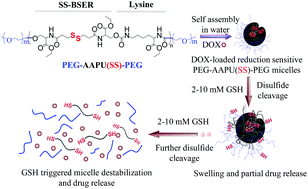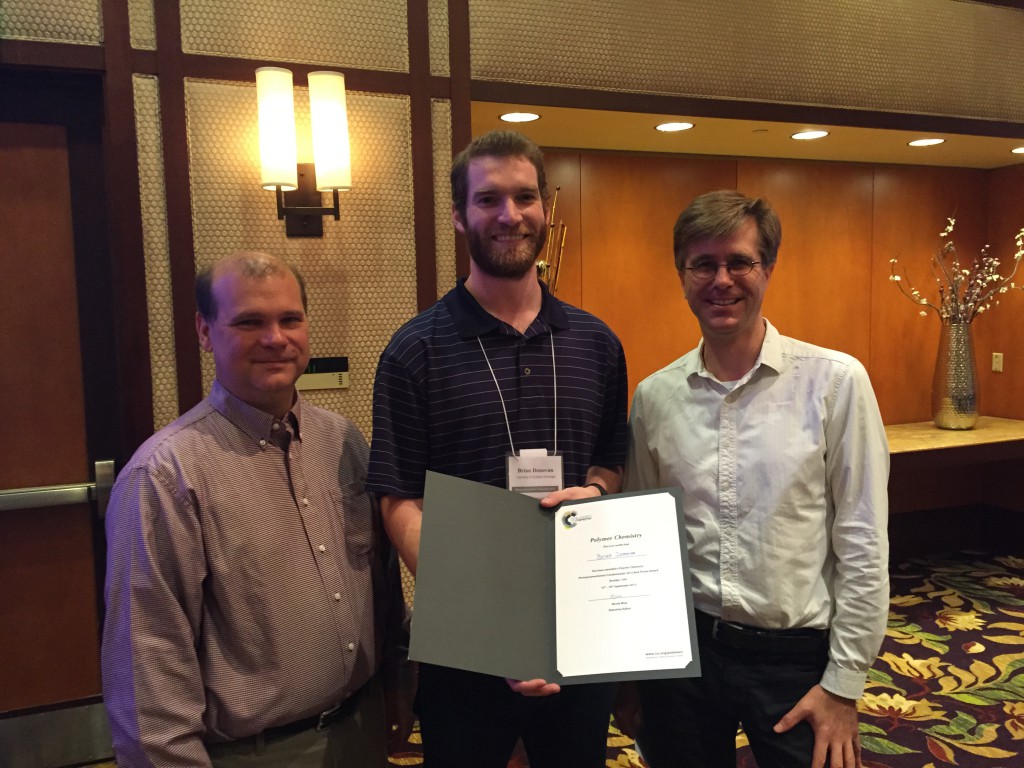Zhang et al. report a highly efficient separation and recycling of an iron catalyst in a p-xylene/PEG-200 biphasic system exploiting Fe(III)-mediated ICAR ATRP.
Atom transfer radical polymerization (ATRP) is a well-established polymerization protocol which allows access to the facile preparation of well-defined materials. As copper is considered an unwanted contamination in some applications, a significant attention has been directly towards the investigation of ATRP catalyst separation and recycling. However, most of the recycling studies are conducted with copper catalysts neglecting other catalytic species such as iron which are less toxic, abundant and biocompatible. Inspired by the successful application of biphasic systems in organic synthesis, Cheng, Zhang and co-workers utilized a PEG-200/p-xylene biphasic system to afford a thermo-regulated phase-separable catalysis (TPSC) via Fe(III)-mediated initiators for continued activator regeneration ATRP (ICAR ATRP). Although PEG-200 and p-xylene are immiscible at ambient temperature, they become homogeneous when heated to 70 °C. Upon commencement of the polymerization, followed by a subsequent cooling period, the reaction mixture separates in two phases. The PEG-200 phase includes the catalyst complex and could be re-used 10 times while still maintaining high catalyst activity while the p-xylene layer contains well-defined polymers with less than 4 ppm of catalyst. Importantly, the versatility and robustness of this protocol was demonstrated by the polymerization of a large diversity of monomers, including methacrylates, acrylates and styrene. In all cases, narrow molecular weight distributions (Ð <1.27) were obtained while high end-group fidelity was verified through successful chain extension experiments that confirmed the “living”/controlled nature of the system. This novel strategy complements previous studies in the field and clearly shows a trend of using alternative metals for controlled polymerizations while at the same time recycling the catalyst to minimize cost and purification steps.
Tips/comments directly from the authors:
1. Iron catalysts have unique advantages over copper catalysts from the view point of catalyst abundancy, biocompatibility and toxicity. Therefore, iron catalysts are better candidates than others for the synthesis of polymeric materials, especially those used for biomedical applications, by the ATRP method.
2. For this Fe(III)-mediated ICAR ATRP, it should be noted that choosing a facile and highly efficient separation biphasic TPSC system for the features of homogeneous catalysis at high temperatures (polymerization temperature) and phase separation at room temperature is important.
3. In this system iron catalyst complexes can be separated and recycled in situ more than 10 times. However, a small amount of PEG-200 may dissolve in p-xylene, as a consequence, we can add some fresh PEG-200 to keep a more efficient TPSC strategy.
4. The organic phase (p-xylene layer with the resultant polymers) can be transferred at room temperature by simple decantation and washed with p-xylene in recycling procedure.
Fe(III)-mediated ICAR ATRP in a p-xylene/PEG-200 biphasic system: facile and highly efficient separation and recycling of an iron catalyst, by B. Zhang, X. Jiang, L. Zhang, Z. Cheng and X. Zhu, Polym. Chem., 2015, 6, 6616-6622
Dr. Athina Anastasaki is a Web Writer for Polymer Chemistry. She is currently a Warwick (UK)/ Monash (Australia) research fellow working under the Monash Alliance. Visit http://haddleton.org/group-members for more information.















